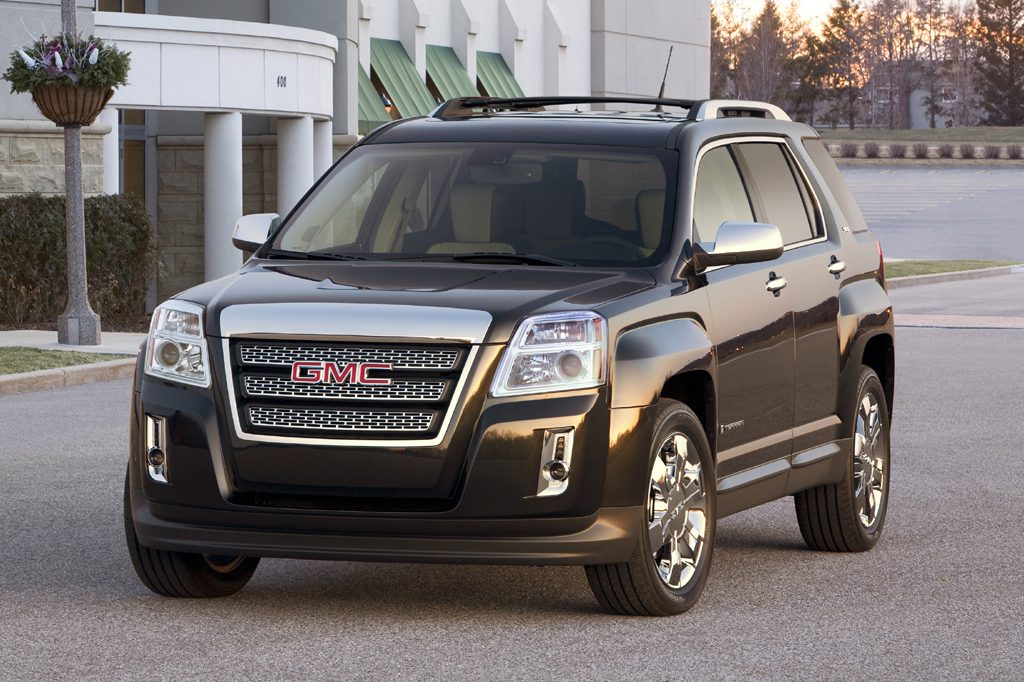| Midsize SUV; Built in Canada |
|
|
| Good condition price range: $10,600 – $34,100* |

2010 GMC Terrain front

2010 GMC Terrain rear

2010 GMC Terrain interior

2010 GMC Terrain
| Pros: |
|
| Cons: |
|
GMC’s smallest SUV earns our Recommended (20010-12) nod for passenger accommodations and overall refinement. Compared with the similar Chevrolet Equinox, Terrain offers unique styling, additional standard equipment, and available cloth seating that’s notably better than its sibling. Both Terrain and Equinox merit serious consideration from midsize-crossover shoppers.
Overview
Launched for 2010, GMC’s Terrain was this General Motors division’s first five-passenger crossover SUV. GMC’s smallest vehicle, Terrain shared its basic design with the Chevrolet Equinox. Like Equinox, Terrain came with either a four-cylinder or V6 engine and either two-wheel or all-wheel drive. Trim levels included SLE-1, SLE-2, SLT-1, and SLT-2. All had a 182-horsepower 2.4-liter four-cylinder engine. Optional on all but the SLE-1 was a 264-horsepower 3.0-liter V6. The sole transmission was a six-speed automatic. Standard safety features included antilock braking, traction control, an antiskid system, curtain-side airbags, and front-side airbags. Terrain marked the first application of GM’s active noise cancellation system, which was designed to quell mechanical noise. This feature was offered on four-cylinder models. A rearview camera was standard on all Terrain models. So was GM’s MultiFlex rear seat, which slid up to 8 inches fore and aft to benefit passenger or cargo room. Remote engine start, a navigation system with 10-gigabyte hard drive for storing digital music files, and DVD entertainment were available. Midsize crossover SUV rivals included the Ford Edge, Honda Pilot, Hyundai Santa Fe, Mazda CX-7, and Toyota Highlander.
Yearly Updates
| 2011 Terrain New for 2011, the V6 was capable of running on E85 ethanol-blended fuel. Otherwise, little changed on the Terrain following its introduction for the 2010 model year. |
| 2012 Terrain The 2012 GMC Terrain added forward-collision and lane-departure warning as an option for the top-line SLT-2 fitted with the optional V6 engine. |
| 2013 Terrain The big news for the 2013 Terrain was the launch of a top-line Denali trim level. GM also introduced a new V6 engine with more power. |
| 2014 Terrain Except for new exterior colors and some minor wheel changes, the 2014 GMC Terrain carried over intact from 2013. |
